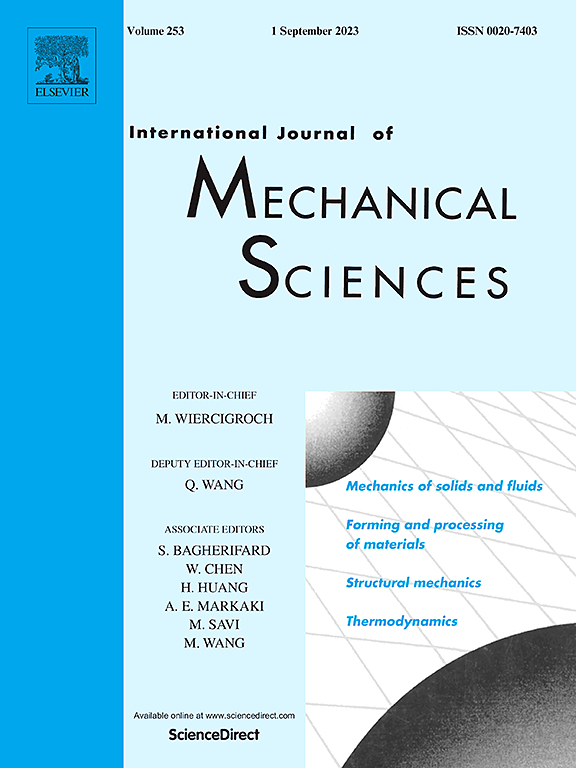Turbulent melt lubrication and current-carrying dynamic characterizations of the contact interface under magneto-thermal effect
IF 7.1
1区 工程技术
Q1 ENGINEERING, MECHANICAL
International Journal of Mechanical Sciences
Pub Date : 2025-02-09
DOI:10.1016/j.ijmecsci.2025.110052
引用次数: 0
Abstract
Under high-speed and high-temperature current-carrying conditions, turbulence in the metal liquefaction layer significantly influences friction interface performance, especially in a magneto-thermal shock environment. The interplay between turbulence and interface roughness complicates the dynamic behavior of hybrid lubrication and electrical contact. To explore the underlying mechanisms, this study constructs a turbulent melt lubrication model by integrating magnetic, temperature, and tribological calculations using the finite difference method (FDM). The findings reveal that armature velocity variations notably affect interface heat distribution, causing melt waves to propagate along the contact interface. As working conditions change, the primary heat source at the interface shifts from Joule heat to a combination of viscous and Joule heat (63.81 % and 36.19 %, respectively), demonstrating the complexity of the energy conversion process. Notably, the formation of a metal liquefied layer reduces the coefficient of friction and alters the lubrication state, which is crucial for optimizing the performance of electromagnetic launching system (EMLs).

求助全文
约1分钟内获得全文
求助全文
来源期刊

International Journal of Mechanical Sciences
工程技术-工程:机械
CiteScore
12.80
自引率
17.80%
发文量
769
审稿时长
19 days
期刊介绍:
The International Journal of Mechanical Sciences (IJMS) serves as a global platform for the publication and dissemination of original research that contributes to a deeper scientific understanding of the fundamental disciplines within mechanical, civil, and material engineering.
The primary focus of IJMS is to showcase innovative and ground-breaking work that utilizes analytical and computational modeling techniques, such as Finite Element Method (FEM), Boundary Element Method (BEM), and mesh-free methods, among others. These modeling methods are applied to diverse fields including rigid-body mechanics (e.g., dynamics, vibration, stability), structural mechanics, metal forming, advanced materials (e.g., metals, composites, cellular, smart) behavior and applications, impact mechanics, strain localization, and other nonlinear effects (e.g., large deflections, plasticity, fracture).
Additionally, IJMS covers the realms of fluid mechanics (both external and internal flows), tribology, thermodynamics, and materials processing. These subjects collectively form the core of the journal's content.
In summary, IJMS provides a prestigious platform for researchers to present their original contributions, shedding light on analytical and computational modeling methods in various areas of mechanical engineering, as well as exploring the behavior and application of advanced materials, fluid mechanics, thermodynamics, and materials processing.
 求助内容:
求助内容: 应助结果提醒方式:
应助结果提醒方式:


